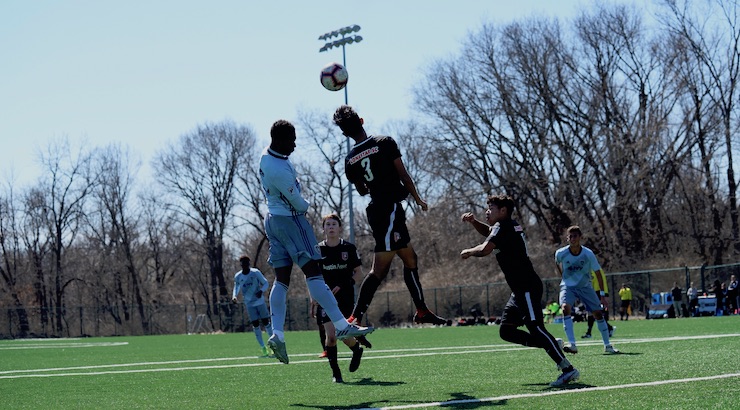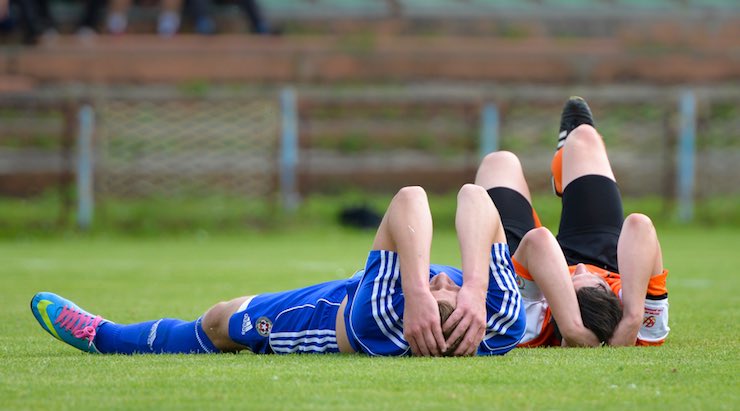Trailblazer Doug Andreassen on Concerns Regarding Concussions and TBI
There are as many as 3.8 million sports-related concussions in the United States every year. Concussion Awareness remains one of the biggest issues we face in youth sports.
The US Centers for Disease Control and Prevention (CDC) says that in 2017, an estimated 15% of high school students experienced 1 or more concussions, and 6% experienced 2 or more.
While that is shocking, what is worse is that this report released in 2018 states that the number of concussions is underreported because the CDC study includes anonymous self-reports from the students themselves, many of whom may try to hide the injury from coaches and parents.
The same report states that a study of high school athletes found that among athletes with concussions, 40% reported that their coach was unaware of their symptoms.
Student-Athletes might not always recognize or want to report having experienced a concussion.
According to the CDC, during 2001-2009, an estimated 2.7 million children under the age of 19 years were treated annually in emergency departments (EDs) for sports and recreation-related injuries.
 Approximately 6.5%, or 173,285, of these injuries, were traumatic brain injuries (TBIs), including concussion.
Approximately 6.5%, or 173,285, of these injuries, were traumatic brain injuries (TBIs), including concussion.
Adults need to step up – it is as simple as that.
There was a major lawsuit that triggered these changes and as a result, the U.S. Soccer Federation, and member defendants agreed to improve concussion awareness and education among youth coaches, referees, parent, and players. They also had to instill uniform concussion management and return-to-play protocols for youth players.
In addition, the game had to be changed … as a result of the lawsuit settlement, it was decided that the rules of substitution would be modified to allow players who may have suffered a concussion during games to be evaluated without penalty. And, finally, youth players under the age of 10 and younger could not head the ball plus there is a limit to how much players between the ages of 11 to 13 can practice heading the ball.
People need to hear what trailblazer Doug Andreassen has to say on the topic.
Doug Andreassen: The dialogue on concussions in the world of youth soccer is not new.
We need to call this injury what it is – TRAUMATIC BRAIN INJURY.
There is now legislation in all 50 states in regards to youth concussions.
Diane Scavuzzo: U.S. Soccer kicked off Recognize to Recover in part to help promote awareness of concussions. Back in December of 2015, U.S. Soccer unveiled the U.S. Soccer Concussion Initiative and its guidelines have been in force since January of 2016.
Doug Andreassen: Yes, and they eliminated heading for youth players 10 years old and under.
Diane Scavuzzo: Why was heading the ball such an issue?
Doug Andreassen: While the talk was about the heading of the ball, the real issue that needed solving was the repetitive hits to the head.
Everyone reacts differently to these repetitive hits. Some incur Traumatic Brain Injuries, quickly, others can take multiple hits before a recorded TBI occurs.

The analogy we use in this effort goes like this: Each human head can be related to an egg, for the purpose of this discussion.
If we place that egg in the center of the table and provide each person sitting around the table with a butter knife and ask them to tap the egg until it breaks, we know what occurs. While one individual can tap the egg once, others can tap the egg multiple times before it breaks.
What we know, is that the egg will break.
With each hit the egg develops fractures or cracks that will lead to the breaking of the egg, thus the TBI occurs.
With our youth soccer players, they do not need to receive the balls in the air at these younger ages to develop their skills in this repetitive manner when the scientific data has demonstrated that these years are the formative years for cognitive developments in their lives.
Medical Science does not have an answer when RTP occurs. Some can recover quickly, others can take weeks and other months.
What we do know is that once a concussion occurs, the second one, the third one and so forth occur much easier than the first.
The soccer authorities who are really informed and who have been impacted but concussions know that eliminating heading the ball for our youngest youth player is smart.
Taylor Twellman, Brandi Chastain, Cindy Cone, and others tell us that by keeping the ball on the ground, players will develop far superior skills on the pitch and better development of the game.
Diane Scavuzzo: It’s been nearly 20 years since Brandi Chastain’s winning kick in a penalty shootout between the USA and China in the FIFA Women’s World Cup at the Rose Bowl. Back then no one talked about the fear of concussions. In June 2014, Chastain asked players to reverse their jerseys to show support for a rule change: no headers for players under 14.
While the ban on headers does not extend to the age of 14, Chastain was able to make a huge impact on the issue.
Today, we still have an issue of players minimizing their possible concussion injuries.
Doug Andreassen: In closing, let’s be sensible about protecting our children.
If you are a coach, an administrator or a parent, one of our main responsibilities is safety and stewards of the game.
Let’s fulfill that role.
References for TBI: Get the Facts, Mayo Clinic, CDC on TBI, NINDS Traumatic Brain Injury, TBI and Taylor Twellman – Career Cut Short By Concussions







